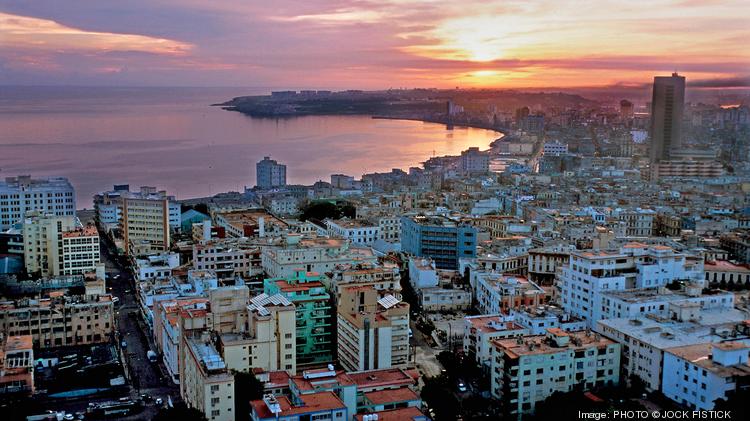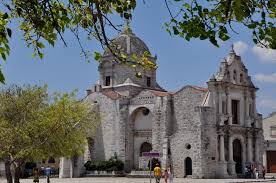 LA IGLESIA DE PAULA, LA HABANA,TODAVIA VIVA RELIQUIA DEL PASADO.
LA IGLESIA DE PAULA, LA HABANA,TODAVIA VIVA RELIQUIA DEL PASADO.
La iglesia de Paula, en el Centro histórico de La Habana es hoy, sin dudas una de las más atrayentes reliquias de la época colonial que pese a numerosas transformaciones conserva su valor patrimonial.
Encontrar la historia del lugar se hace un tanto difícil debido a que un incendio provocado por el tristemente célebre corsario francés Jacques de Sores, en el asalto y saqueo de la ciudad a mediados de 1555, incineró los archivos del Cabildo habanero anteriores a 1550.
No obstante, documentos históricos refieren que casi veinte años después del fatídico acto de barbarie, se reemplazó el mísero bohío “carente de ornamentos y demás utensilios religiosos” que hacía las veces de iglesia por un inmueble “de cal y canto” llamado Parroquial Mayor destinado a celebrar “decorosamente” la liturgia católica.
Casi un siglo después, el 25 de abril de 1665, se hace público el testamento del prelado Nicolás Estévez Borges (1617-1665), a la sazón rector de dicha Parroquial Mayor, que lega parte de su patrimonio para erigir una hermita o capilla “con la debida decencia” consagrada a San Francisco de Paula. Especificaba además que “si el remanente de dichos bienes fuere suficiente fundar, agregado a dicha hermita y con incorporación de ella, un hospital en que se curen mujeres pobres”.
COMIENZOS DE LA CONSTRUCCION ORIGINAL.
Los terrenos, de aproximadamente una manzana y con uno de los costados colindante con la Bahía, se escogieron en lo que entonces se conocía como Barrio de Campeche, por ser asentamiento de ciudadanos procedentes de México.
Allí se encontraba enclavada la primitiva y muy pobre hermita del Humilladero, punto final de la procesión del Via crucis, que partía religiosamente de la plaza de San Francisco.
Se desconoce la fecha exacta de inicio y terminación del hospital, pero de la iglesia se sabe que comenzó a edificarse el 27 de febrero de 1668 y abrió al culto cuatro años después, en 1672.
Nuevos retoques fueron ejecutados a partir de 1770, por el entonces capitán general de la Isla Felipe Fons de Viela, marqués de la Torre, y quien es considerado el primer urbanista de La Habana colonial.
Al conjunto que conformaban la iglesia y el hospital, el marqués De la Torre añadió una senda para el entretenimiento y recreo de la sociedad habanera, que denominó Alameda de Paula, el cual constituyó el primer paseo colonial de la ciudad.
LA HERMOSA IGLESIA DE PAULA.
La fachada de la Iglesia de Paula, de verdadero valor estético, se asemeja a la de la iglesia de Santo Domingo, en Guanabacoa, y del convento de San Francisco de Asís, en la Habana Vieja, erigidos también durante el siglo XVIII.
El detalle de su pequeña cúpula es de belleza singular y hacia ella conduce una pequeña escalera que, aunque mutilada hoy en su parte inferior, se conserva escondida en los restos de un arco que coronaba una de las salidas al desaparecido hospital.
A través de la contigua Alameda de Paula arribamos a un sitio arqueológico, donde se muestran los cimientos de la sacristía original y evidencias de las costumbres funerarias en el interior de los templos.
Hallazgos obtenidos como resultado de las excavaciones llevadas a cabo durante su rehabilitación capital, iniciada en 1996 y concluida en el año 2000.
Más tarde, a inicios de 2008, retornó a la Iglesia de Paula su órgano original, construido por la casa francesa Daublaine-Ducroquet entre 1845 y 1855, el cual conserva el estilo neogótico de su caja de resonancia y sus más de 400 tubos.
Se dice que es el único instrumento de su tipo que se preserva “íntegro y funcional” en su lugar de origen.
Con los trabajos de restauración y conservación por la Oficina del Historiador de la Ciudad, vuelven a ser Iglesia, Hospital y Alameda de Paula un mismo espacio sociocultural, pese a las embestidas de despiadada modernidad contra su invaluable entorno colonial.
 THE PAULA CHURCH, HAVANA, A RELIC OF THE PAST STILL ALIVE.
THE PAULA CHURCH, HAVANA, A RELIC OF THE PAST STILL ALIVE.
The church of Paula, in the Historic Center of Havana, is today, without a doubt one of the most attractive relics of the colonial era that despite numerous transformations retains its heritage value.
Finding the history of the place is somewhat difficult because a fire caused by the sadly famous French privateer Jacques de Sores, in the assault and looting of the city in mid-1555, incinerated the files of the Havana City Council before 1550.
However, historical documents indicate that almost twenty years after the fateful act of barbarism, the miserable bohío “lacking ornaments and other religious utensils” that served as a church was replaced by a building “of lime and song” called Parroquial Mayor destined to celebrate “decorously” the Catholic liturgy.
Almost a century later, on April 25, 1665, the will of the prelate Nicolás Estévez Borges (1617-1665) is made public, at the time of the reign of the Parochial Mayor, who bequeathed part of his estate to erect a hermitage or chapel “ with due decency ”consecrated to San Francisco de Paula. It also specified that “if the remainder of said property were sufficient to found, added to said hermitage and with the incorporation of it, a hospital in which poor women are cured.”
BEGINNINGS OF THE ORIGINAL CONSTRUCTION.
The lands, of approximately one block and with one of the sides adjacent to the Bay, were chosen in what was then known as Barrio de Campeche, as it was a settlement of citizens from Mexico.
There was the primitive and very poor hermitage of the Humilladero, the endpoint of the procession of the Via Crucis, which religiously departed from the Plaza de San Francisco.
The exact date of beginning and termination of the hospital is unknown, but the church is known to have been built on February 27, 1668, and opened to worship four years later, in 1672.
New tweaks were executed from 1770, by the then captain-general of Felipe Fons de Viela Island, marquis de la Torre, and who is considered the first urbanist in colonial Havana.
To the set that made up the church and the hospital, the Marquis De la Torre added a path for the entertainment and recreation of Havana society, which he called Alameda de Paula, which was the first colonial walk in the city.
THE BEAUTIFUL CHURCH OF PAULA.
The facade of the Church of Paula, of true aesthetic value, resembles that of the church of Santo Domingo, in Guanabacoa, and the convent of San Francisco de Asís, in Old Havana, also erected during the 18th century.
The detail of its small dome is of singular beauty and towards it leads a small staircase that, although mutilated today in its lower part, remains hidden in the remains of an arch that crowned one of the exits to the disappeared hospital.
Through the adjoining Alameda de Paula, we arrive at an archaeological site, where the foundations of the original sacristy and pieces of evidence of the funeral customs inside the temples are shown.
Findings obtained as a result of the excavations carried out during its capital rehabilitation, initiated in 1996 and completed in 2000.
Later, in early 2008, he returned to the Church of Paula his original organ, built by the French house Daublaine-Ducroquet between 1845 and 1855, which retains the neo-Gothic style of its soundboard and its more than 400 tubes.
It is said to be the only instrument of its kind that is preserved “full and functional” in its place of origin.
With the restoration and conservation work by the Office of the Historian of the City, the same socio-cultural space is again Church, Hospital and Alameda de Paula, despite the onslaught of ruthless modernity against its invaluable colonial environment.
Agencies/ RHC/ Lorena Viñas/ Internet Photos/ Arnoldo Varona/ www.TheCubanHistory.com
THE CUBAN HISTORY, HOLLYWOOD.












